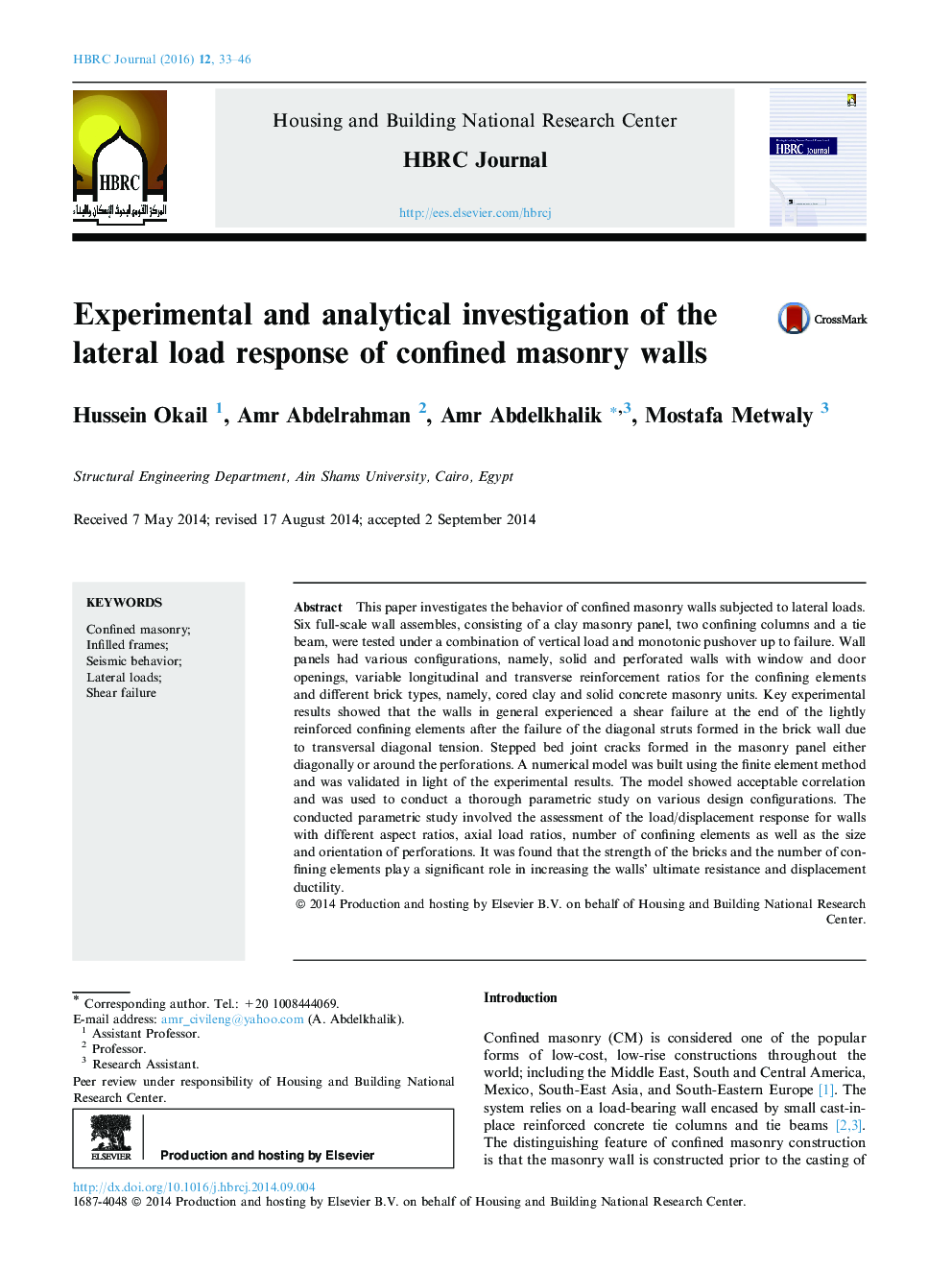| Article ID | Journal | Published Year | Pages | File Type |
|---|---|---|---|---|
| 274599 | HBRC Journal | 2016 | 14 Pages |
This paper investigates the behavior of confined masonry walls subjected to lateral loads. Six full-scale wall assembles, consisting of a clay masonry panel, two confining columns and a tie beam, were tested under a combination of vertical load and monotonic pushover up to failure. Wall panels had various configurations, namely, solid and perforated walls with window and door openings, variable longitudinal and transverse reinforcement ratios for the confining elements and different brick types, namely, cored clay and solid concrete masonry units. Key experimental results showed that the walls in general experienced a shear failure at the end of the lightly reinforced confining elements after the failure of the diagonal struts formed in the brick wall due to transversal diagonal tension. Stepped bed joint cracks formed in the masonry panel either diagonally or around the perforations. A numerical model was built using the finite element method and was validated in light of the experimental results. The model showed acceptable correlation and was used to conduct a thorough parametric study on various design configurations. The conducted parametric study involved the assessment of the load/displacement response for walls with different aspect ratios, axial load ratios, number of confining elements as well as the size and orientation of perforations. It was found that the strength of the bricks and the number of confining elements play a significant role in increasing the walls’ ultimate resistance and displacement ductility.
